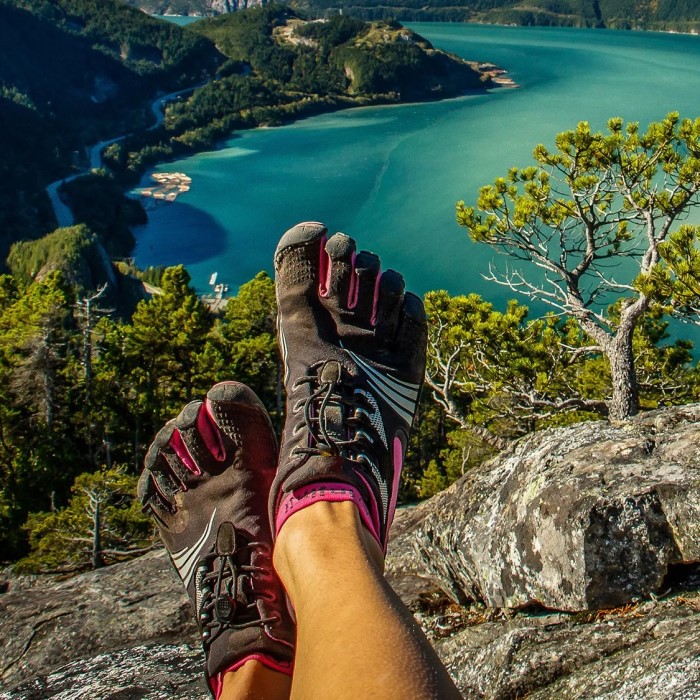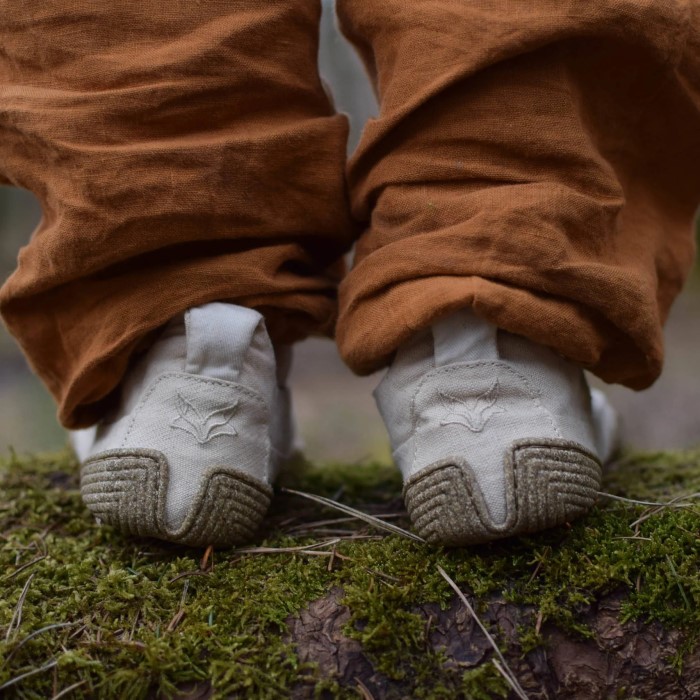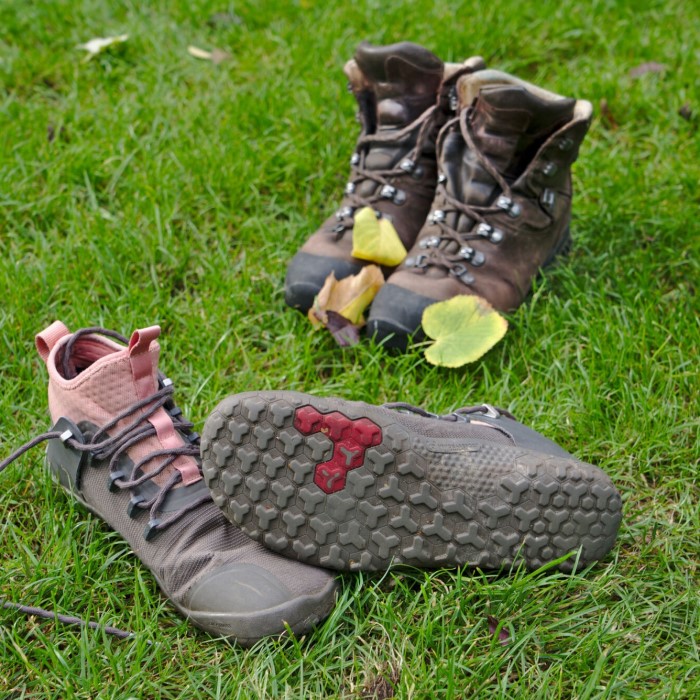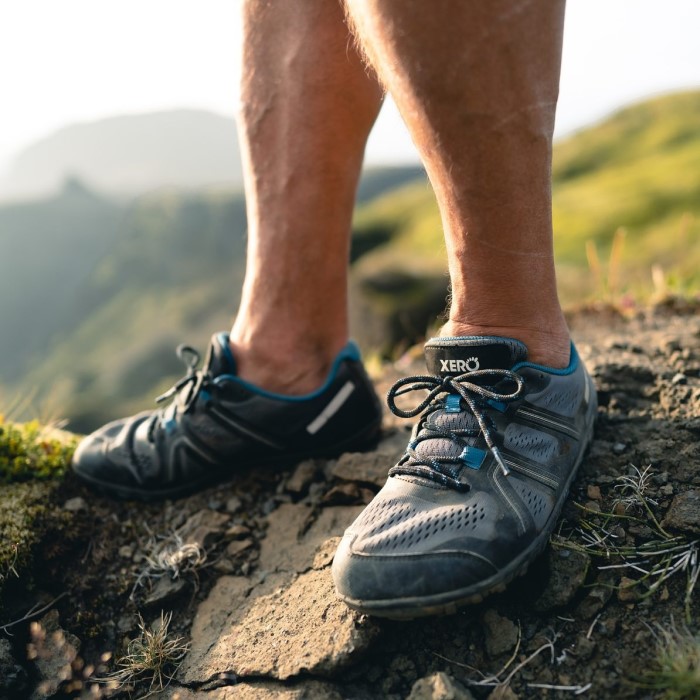What Are Hike Barefoot Shoes?
Hike barefoot shoes are designed to mimic the feeling of walking barefoot. They aim to provide a minimalist experience while protecting your feet from rough surfaces. These shoes prioritize natural movement and comfort over added structure. Unlike traditional hiking shoes, they encourage your feet to move freely. This makes them a popular choice for hikers seeking a closer connection to nature.
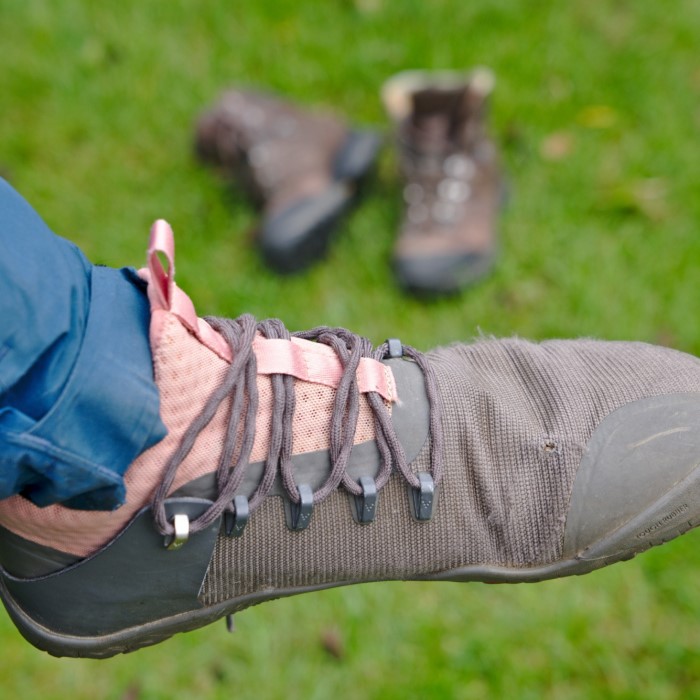
Key Features That Set Them Apart
Hike barefoot shoes come with unique features that make them stand out. These include:
- Minimalist Design: Thin soles allow better ground feel and flexibility.
- Zero Drop: There’s no height difference between heel and toe, promoting natural posture.
- Wide Toe Box: Provides extra room for toes to splay and move naturally.
- Lightweight Build: Reduced weight ensures ease of movement.
- Flexible Materials: Uppers often use stretchable fabrics for maximum comfort.
These features enhance the natural experience of hiking and walking. They are especially beneficial for those who value foot health and movement.
How They Differ From Traditional Hiking Shoes
Traditional hiking shoes and barefoot hiking shoes serve different purposes. Barefoot hiking shoes:
- Focus on Natural Movement: Allow your feet to bend and flex freely.
- Have Minimal Cushioning: Provide just enough protection without compromising ground feel.
- Encourage Muscle Usage: Make foot and leg muscles work harder compared to cushioned shoes.
On the other hand, traditional hiking shoes offer:
- Thicker Soles: For added cushioning and support.
- Rigid Structure: Limits natural foot movement for stability.
- Heavier Weight: Designed for rugged terrain and carrying heavy loads.
If you prefer comfort and nimbleness over structure, hike barefoot shoes are a better fit. They cater to hikers who value a minimalist approach while staying connected to nature.
Health and Comfort Benefits of Barefoot Hiking Shoes
Barefoot hiking shoes offer unique benefits for health and comfort. They prioritize natural movement while protecting your feet. These shoes can significantly improve your hiking experience. Below are key advantages they provide:
Enhanced Natural Movement of Feet
Barefoot hiking shoes allow your feet to move naturally. Their minimalist design replicates the feeling of walking barefoot. The wide toe box gives your toes room to spread and flex freely. Zero-drop soles help maintain a natural posture as you walk. These features make every step feel more connected to the trail environment. Over time, this can enhance your stride and balance.
Improvement in Muscle Strength and Foot Alignment
Using barefoot hiking shoes strengthens foot and leg muscles. Minimal cushioning forces your feet to engage more actively with the terrain. This repeated activation improves muscle tone and overall stability. They also promote better foot alignment. Regular use can help reduce issues like flat feet or improper posture. Stronger muscles and better alignment can prevent long-term discomfort and injuries.
Reduced Risk of Common Hiking Injuries
Barefoot hiking shoes minimize certain injury risks compared to traditional options. The focus on natural movement reduces strain on knees and ankles. Improved balance helps you avoid slipping or tripping on uneven terrain. With heightened sensory feedback, you’ll be more aware of ground conditions. By walking more carefully, injuries like sprained ankles or blisters become less common.
Choosing hike barefoot shoes promotes healthier and more enjoyable outdoor adventures. Their health and comfort benefits are ideal for those seeking a closer connection to nature.
Environmental and Practical Advantages
Hike barefoot shoes offer more than just health and comfort benefits. They provide key environmental and practical advantages that enhance your hiking experience while minimizing your footprint, both figuratively and literally.
Lightweight and Packable Nature
One major advantage of hike barefoot shoes is their lightweight construction. Unlike traditional hiking shoes, these minimalist shoes weigh significantly less. This feature makes them easier to pack, especially for backpacking trips where space and weight are crucial.
Their packable nature adds to their convenience. Due to their flexible design, they can be compactly folded or stored, which is ideal for travelers. Whether you’re carrying them in a backpack or stowing them for multi-day treks, their small size prevents bulkiness.
Besides reducing the load on your feet while hiking, their lightweight form helps save your energy. This is especially beneficial during long trails, as less weight means less effort per step.
Better Sensory Connection to Hiking Surfaces
Barefoot hiking shoes provide an unparalleled sensory experience. Thin soles allow you to feel the ground while still protecting your feet from sharp objects. This direct connection enhances your awareness of the terrain, leading to a more immersive hiking experience.
Feeling the texture of soil, rocks, or grass underfoot fosters a stronger bond with nature. It also helps improve your footing and balance on uneven surfaces. With heightened tactile feedback, you can adjust your steps easily to suit varying conditions.
Finally, this sensory connection promotes mindful hiking. Being more attuned to your environment can make your treks safer and more satisfying.
Choosing barefoot hiking shoes means embracing lighter gear and a deeper connection to your surroundings. These features make them a great option for eco-conscious and adventure-focused hikers.
How to Choose the Right Pair of Barefoot Hiking Shoes
Choosing the right pair of hike barefoot shoes is crucial for a safe and enjoyable hiking experience. A good fit and the proper features can make all the difference. Below are key considerations to help you make an informed decision.
Factors to Consider: Fit, Terrain, and Weather
- Fit: Ensure the shoes fit snugly but allow for natural toe movement. The wide toe box is essential for comfort and foot splay. Avoid shoes that are too tight or loose, as they can lead to discomfort or blisters.
- Terrain: Consider the trails where you’ll hike most often. For rocky or uneven terrain, opt for shoes with durable soles. For softer or flatter trails, thinner soles can provide better ground connection and comfort.
- Weather: Choose materials that suit the climate. For wet conditions, prioritize water-resistant or quick-drying fabrics. In colder climates, thermal options or insulated barefoot shoes can provide extra warmth.
- Activity Type: If you plan long treks, look for shoes with more durable materials. For short or casual hikes, lighter models may suffice.
- Flexibility and Weight: Lightweight yet flexible designs are vital for maintaining energy on the trail. Keep an eye on the overall weight for easier packing and movement.
Overview of Popular Brands and Models
- Vivobarefoot: Known for their durable, sustainable, and well-designed barefoot hiking shoes. They offer various options for different terrains and conditions.
- Merrell: This brand features barefoot-style shoes with excellent grip and flexibility. Their models are good for both beginners and seasoned hikers.
- Xero Shoes: Their lightweight, highly flexible designs are perfect for minimalist hiking enthusiasts. Many models are also budget-friendly.
- Lems Shoes: Offering wide toe boxes and a zero-drop design, Lems provides comfort and versatility. They are well-suited for both hiking and casual wear.
- Barefoot Shoe Companies Online: Many smaller brands focus specifically on unique barefoot designs. Researching reviews and user feedback is helpful.
When selecting hike barefoot shoes, prioritize comfort, suitability for your usual trails, and climate adaptability. Doing so will ensure you get the most out of your hiking adventures.
Adapting to Barefoot Hiking Shoes
Transitioning to barefoot hiking shoes can take time and patience. Unlike traditional hiking shoes, they offer less cushioning and support. This requires your feet and muscles to adapt gradually. The following tips will help you prepare for an enjoyable switch.
Tips for Transitioning From Traditional Hiking Shoes
- Start Slowly: Begin with short walks on easy terrain. Gradually increase duration and difficulty over weeks.
- Alternate Footwear: Use your regular hiking shoes for longer hikes initially. Gradually increase barefoot shoe usage.
- Strengthen Your Feet: Perform exercises like toe spreads, calf raises, and balance drills. These build foot strength.
- Choose Soft Surfaces First: Walk on grass, dirt trails, or sand initially. Avoid rocky or uneven terrains early on.
- Observe Discomfort: Pay attention to soreness or blisters. Adjust usage until your feet adapt fully.
- Break Them In: Wear the shoes around the house or during light activities. This helps them mold to your feet.
Transitioning too quickly can lead to discomfort or injury. Listen to your body and progress gradually.
Building Comfort and Confidence in Barefoot Hiking
- Commit to Consistency: Regular practice will improve your comfort and reduce any initial awkwardness.
- Focus on Posture: Maintain a natural walking gait. Keep your strides shorter and your steps lighter.
- Stay Mindful of Terrain: Be aware of any sharp objects or uneven surfaces. This attention reduces the risk of injury.
- Feel the Ground: Embrace the sensory feedback from the soles. It connects you more closely to nature.
- Join Groups or Forums: Engage with fellow barefoot hiking enthusiasts. They can provide tips and encouragement.
Adapting to barefoot hiking shoes is a rewarding journey. These steps will ensure a smooth and enjoyable experience.
Best Practices for Hiking in Barefoot Shoes
Hiking in barefoot shoes can be a unique and rewarding experience. However, proper preparation and care are essential to maximize their benefits. By following best practices, you can enjoy a comfortable and safe adventure.
Preparing Your Feet and Choosing Suitable Trails
- Start With Easy Trails: Begin on soft, even surfaces like dirt paths or grassy trails. Avoid rocky terrains initially.
- Strengthen Your Feet: Perform exercises like toe stretches and balance drills. These strengthen muscles and improve stability.
- Break Them In Gradually: Wear your barefoot shoes for short walks first. Gradually increase hike duration to adapt.
- Use Increments: Alternate between barefoot shoes and traditional hiking shoes until your feet adjust fully.
- Pay Attention to Terrain: Gradual exposure to varied terrain helps build confidence and footing on harder surfaces.
- Watch the Weather: Avoid overly wet or cold conditions in the beginning to stay comfortable.
Choosing the right trail and preparing your feet ensure a smoother transition. Over time, you’ll build endurance and resilience.
Caring for Barefoot Hiking Shoes
- Clean Regularly: Wash off dirt and debris after every hike. Use mild soap and warm water.
- Air Dry Naturally: Avoid using a dryer or exposing shoes to direct heat. Let them dry naturally to maintain shape.
- Inspect Soles for Damage: Regularly check for wear and tear. Replace shoes once they lose their grip or flexibility.
- Store in a Cool, Dry Place: Keep your shoes in a well-ventilated area to prevent moisture damage or odor.
- Avoid Overloading Them: Barefoot shoes are minimalistic. Avoid carrying excessive weight while wearing them.
- Rotate Shoes: If you hike often, use multiple pairs. This allows each pair to fully dry and reset.
Proper care extends the life of your barefoot hiking shoes. It ensures they stay comfortable and functional for longer outings.
Adhering to these best practices can help you fully enjoy the freedom and connection that barefoot hiking shoes provide.
Frequently Asked Questions About Barefoot Hiking Shoes
Are They Suitable for All Types of Terrain?
Barefoot hiking shoes are versatile but not ideal for all terrains. They work best on soft ground, dirt trails, grass, and sand. However, rocky or extremely rugged terrain can be challenging. Their thin soles provide limited protection from sharp objects and jagged surfaces. On such trails, careful footing is essential to avoid discomfort or injury. If you hike on varied terrain, choose models with slightly thicker and more durable soles. Evaluate the trail conditions beforehand to ensure safety and comfort.
Can Beginners Use Barefoot Hiking Shoes?
Yes, beginners can use barefoot hiking shoes, but gradual adaptation is crucial. Start with short walks on flat terrain to allow your feet to adjust. Alternate between barefoot and traditional hiking shoes during initial hikes. Perform foot-strengthening exercises like toe spreads and calf raises to prepare. Beginners should focus on easy trails to reduce the risk of soreness or blisters. Patience is key, as rushing the transition can lead to discomfort or injuries. With proper care, barefoot hiking shoes can be a rewarding choice for new hikers.
How Long Do They Typically Last?
The lifespan of barefoot hiking shoes depends on usage and the terrain they encounter. Frequent hikes on rough terrain may wear them out faster. On average, they last between 300 to 500 miles of hiking. Regular maintenance can extend their durability. Clean the shoes after every hike, and inspect for wear on the soles and uppers. Avoid exposing them to excessive moisture or heat, as it can harm materials. Proper care ensures that they serve you well over numerous adventures.
Final Thoughts on Hike Barefoot Shoes
Embracing a New Way to Experience Nature
Hike barefoot shoes offer a unique blend of comfort, freedom, and connection to nature. Their minimalist design promotes natural movement, strengthens muscles, and improves foot alignment. These shoes reduce hiking injuries while enhancing sensory awareness of your surroundings.
Their lightweight and flexible construction make them practical for packing and long hikes. Barefoot hiking shoes also foster mindful walking by letting you feel the texture of trails. Adapting to them takes time, but the long-term benefits are worth the effort.
Moving away from bulky footwear to this minimalist option is transformative. It lets hikers embrace simplicity and form a deeper bond with the environment. For nature lovers and adventure seekers, these shoes redefine hiking experiences. Explore the trail with a new appreciation for the ground beneath your feet.
